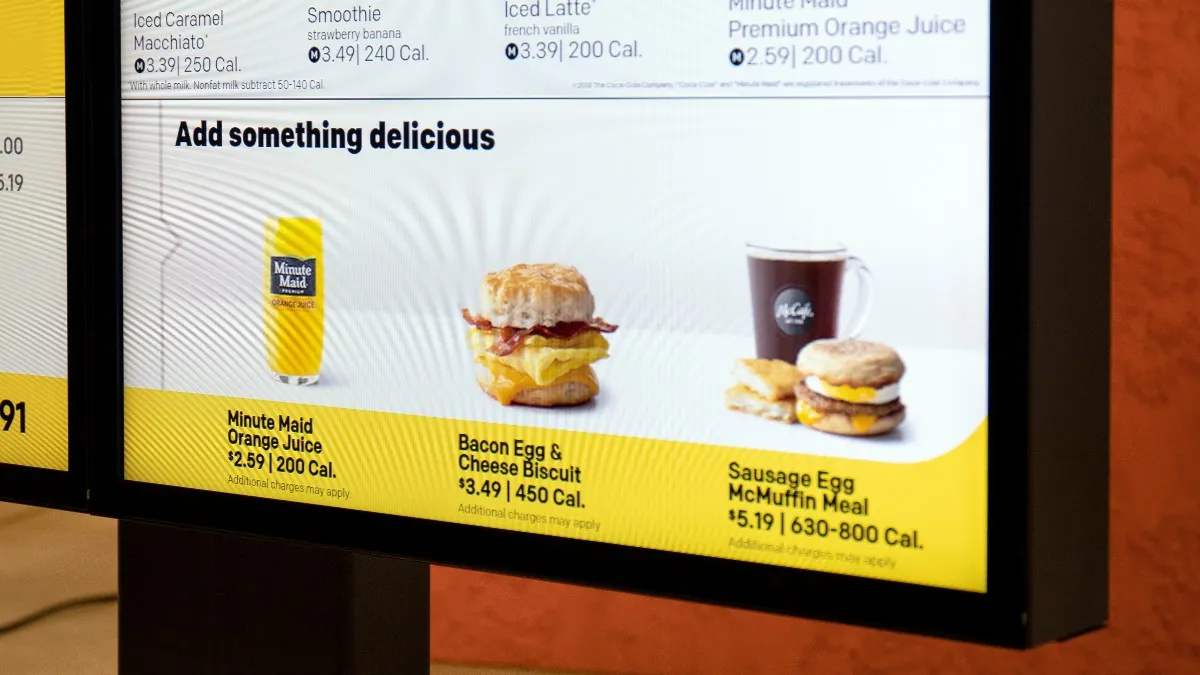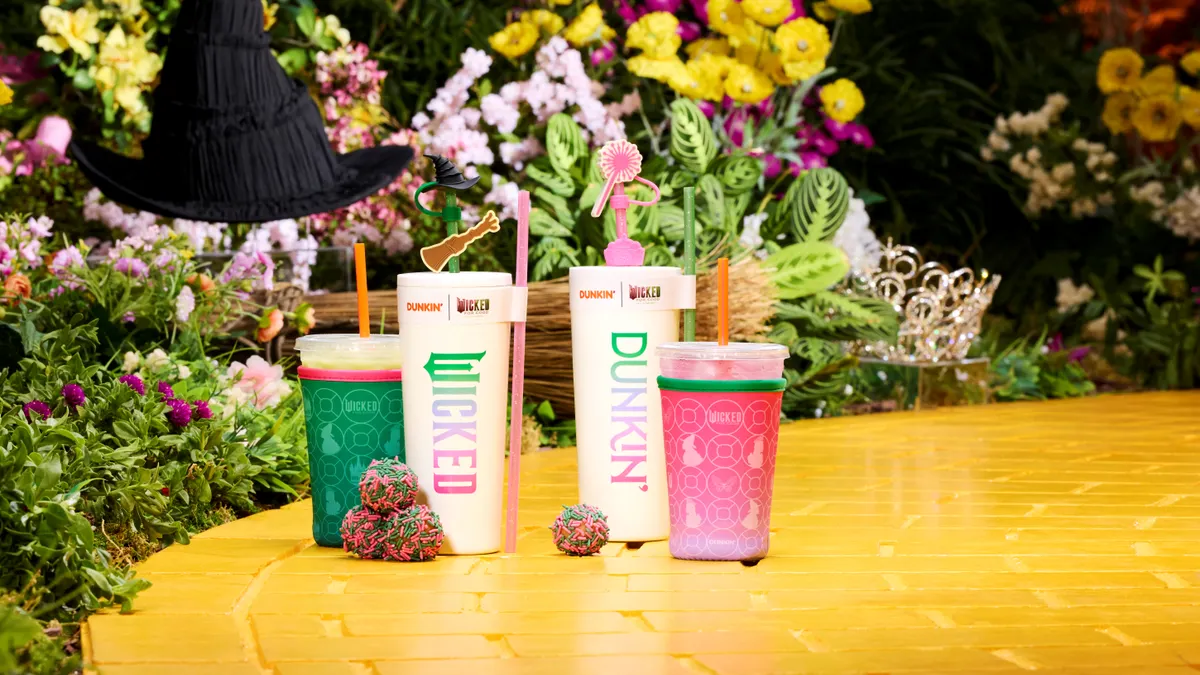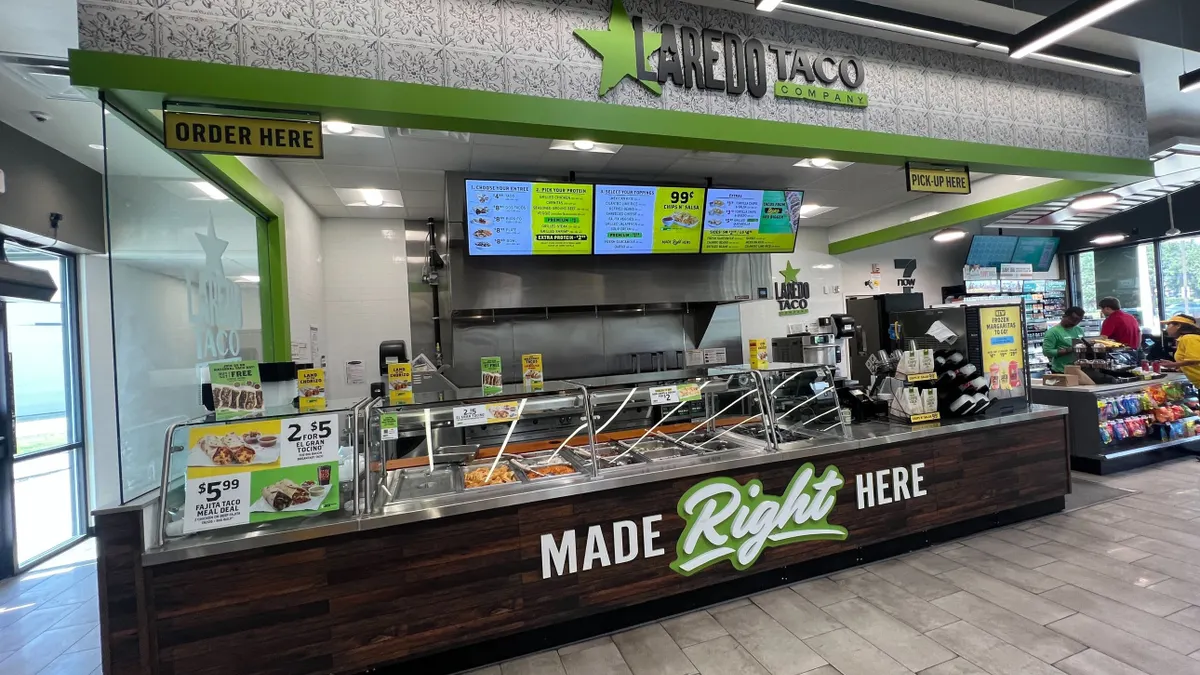McDonald's $300 million purchase of tech company Dynamic Yield last week — a first for fast food — and its $3.7 million investment in mobile app developer Plexure may have left some in the restaurant world scratching their heads. But it’s all a part of an industrywide push to increase tech adoption.
The QSR has already been increasing its technology spending in recent years to develop new consumer-facing technology, McDonald's Chief Financial Officer Kevin Ozan said during the JP Morgan Gaming, Lodging, Restaurant & Leisure Forum in March.
"I think technology, which used to be considered to support the business, is now to grow the business," he said.
These investments could give McDonald's additional insights emerging tech rivals won’t have access to, Moody's vice president and senior credit officer William Fahy told Restaurant Dive.
BTIG managing director and restaurant analyst Peter Saleh told Restaurant Dive that technology and marketing power are the only areas where restaurants can have any kind of competitive edge in the industry. And when it comes to technology, companies either have to build it themselves or buy a company to keep its assets proprietary and exclusive, which he says is likely why McDonald's bought Dynamic Yield.
McDonald's investment in Plexure, which is a mobile app developer, also has a built-in contract where the restaurant gets new service levels and pricing as well as exclusive access to new technologies, blocking competitors from access.
The fast food chain is already at the forefront of many emerging restaurant technologies with its self-order kiosks and soon-to-be-adopted drive-thru tech, Fahy said. Further leveraging technology means improving the customer experience and driving sales, Fahy said.
McDonald's is looking to offer diners a more unique experience, Saleh said. The in-store kiosks at remodeled restaurants, for example, are larger, more expensive and have more robust ordering platform than the iPads and tablets other restaurants are using, he said.
However, the self-order kiosks and even online ordering don’t improve sales at the drive-thru, which accounts for 60% to 70% of QSR sales. So adopting technology through the Dynamic Yield purchase makes sense, Fahy said.
"This, to me, is good technology," Fahy said. "After a while it remembers you and your last orders."
In addition to learning customer behaviors, The Dynamic Yield technology also works on all of the chain’s digital platforms, McDonald's president and CEO Steve Easterbrook said in a video about the acquisition.
"We can start to link this entire technology infrastructure together," he said.
Other QSRs have been testing new drive-thru technology, such as Good Times Burger's pilot of Valyant AI's system, which uses an AI platform to take and process drive-thru orders. Chipotle is testing drive-thru windows, where customers can order online and pickup their food at a designated time at the windows.
Since digital drive-thrus are also part of McDonald's Experience of the Future renovations, the addition of Dynamic Yield’s technology will incentivize franchisees to complete the remodels in order to gain access to the new technology, according to a report from Mizuho emailed to Restaurant Dive.
"There is definitely an urgency among franchisees to improve cash flows," Saleh said. "McDonald's is responding to several years of anemic traffic and a struggle to get traffic back into the stores."
McDonald's tech strategy appears to be focused on growing average check and purchases, Saleh said.
"They want to move faster than they have in the past and get things implemented quicker," Saleh said. "I think it’s probably the right strategy… They have ambitious goals."
The plan is to roll out the new drive-thru tech to 1,000 stores and possibly reach all U.S. stores by the end of the year, Saleh said.
McDonald's will likely help set an example for the industry. Once rivals sees how these technologies work, others will likely follow suit if they’re successful, Fahy said.
Technology invading QSRs
McDonald’s isn’t alone in its focus on technology, however. Burger King has been looking into tech-centric remodels and has revamped its mobile app. Shake Shack, Wendy's and Yum have also been increasing their focus on technology. Recently, Starbucks invested $100 million in a food and retail fund, which will back startups focused on technology and product solutions in these segments. Yum Brands also put $200 million toward Grubhub last year and gained a seat on the board. Yum's Pizza Hut also bought QuikOrder, a digital ordering platform, late last year.
"Technology has been in the industry for awhile," Fahy said. "[Tech adoption] has accelerated over the last year and this year it will continue to accelerate going forward."
Some of the first front-of-house consumer-facing technology to arrive in the industry appeared in casual dining chains, including Applebee's, Chilli's and Olive Garden, with the addition of tablets such as Ziosks and Presto. These tablets allow customers to order and pay, freeing up wait staff to handle more customers at a time, Fahy said.
Digital ordering via mobile apps or self-order kiosks, has similar functionality and also reduces the need for restaurants to have counter staff.
Chains are also focusing on tech because that’s where the consumer is, Saleh said.
Digital ordering is attractive to young consumers, who are becoming used to ordering off their smartphones, Fahy said. Older diners aren't quite used to it, but have been adjusting, Fahy said.
"More and more growth for restaurants is coming from digital orders," Saleh said. "I think that is where the consumer is and that is where the growth is happening."
Saleh said digital ordering is helping the likes of Chipotle, Starbucks, Domino's and even Olive Garden grow sales. For Olive Garden, a good portion of its off-premise sales are coming from online orders, Saleh said. For example, on Valentine’s Day the casual dining chain reported a 52% increase in online ordering, helping drive a 20% increase in off-premise sales.
"I think you’ll see the digital sales mix only grow," Saleh said.
"More and more growth for restaurants is coming from digital orders. I think that is where the consumer is and that is where the growth is happening."

Peter Saleh
Managing Director and Restaurant Analyst, BTIG
Customers placing their own orders tend to engage with the menu longer and spend 15% to 25% more than orders placed at the counter, Saleh said.
In the grand scheme of things, technology in the restaurant is all about helping the consumer buy food with less friction, Fahy said.
"Technology in and of itself will help with the customer experience, but [will] also help to mitigate wage pressure that everyone is feeling," Fahy said.
Eventually mobile ordering will be the norm, and the next big push among restaurants, outside of delivery, will be to have everything from ordering to loyalty programs on the smartphone, Fahy said.
"That is the endgame for all restaurants," he said.


















